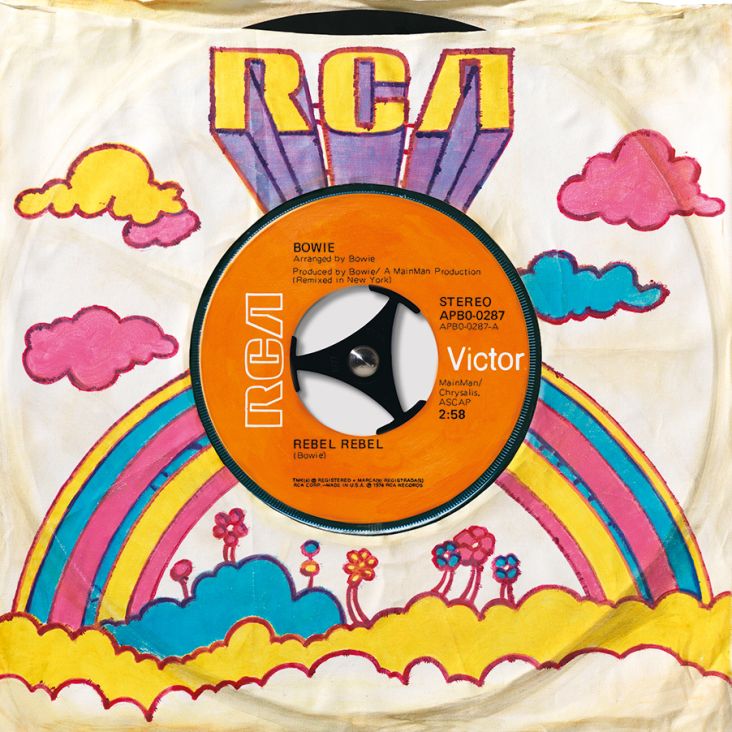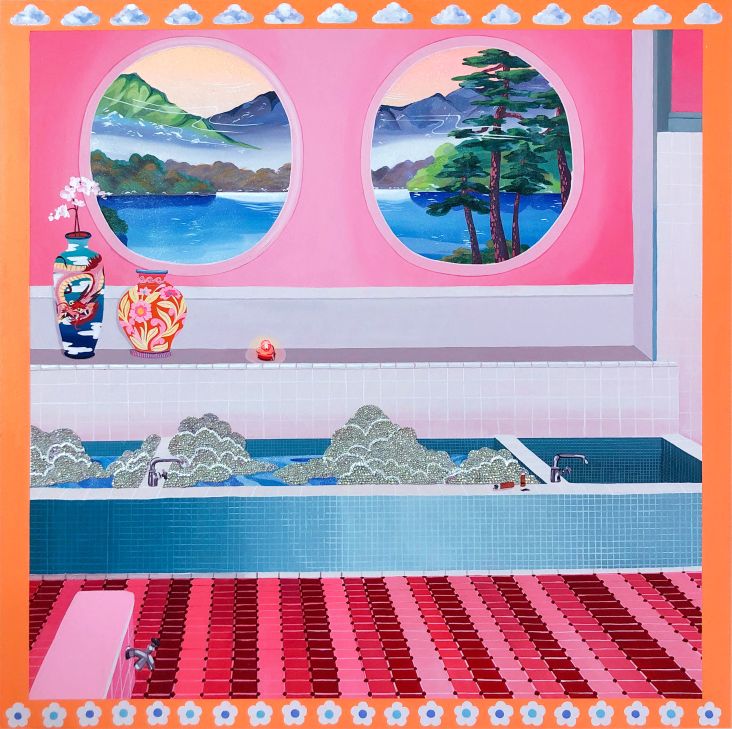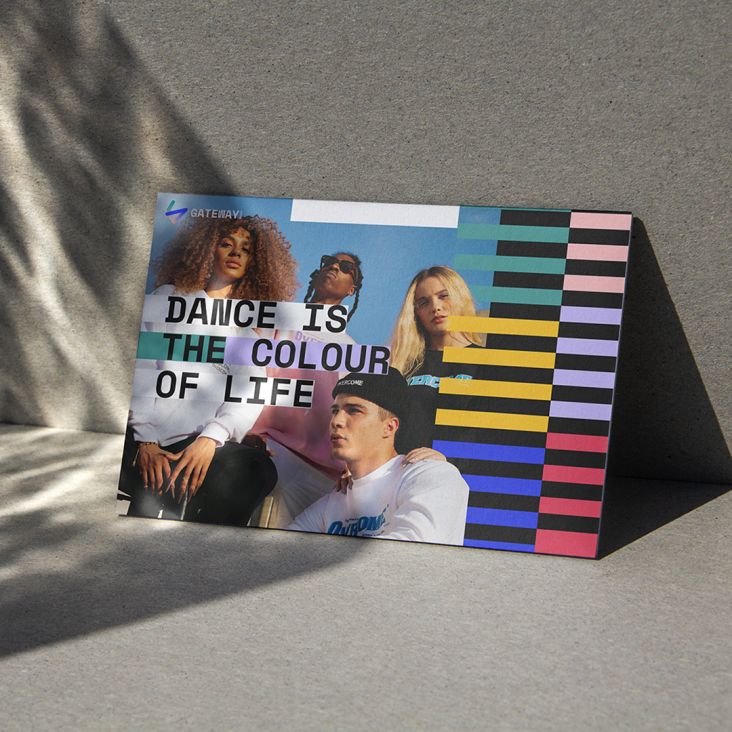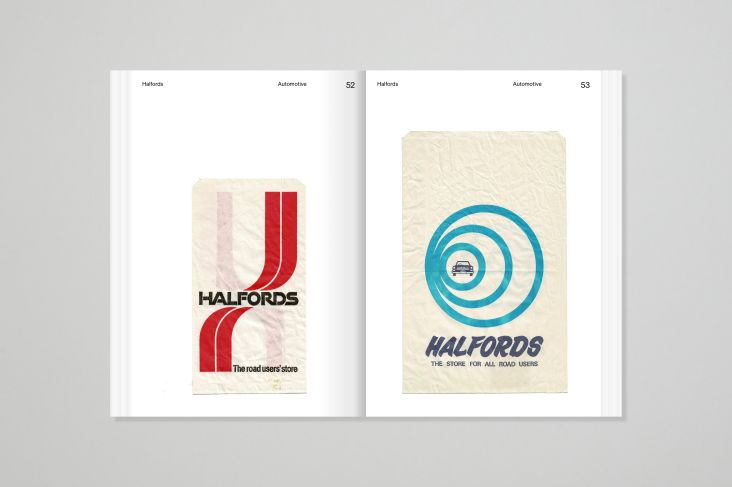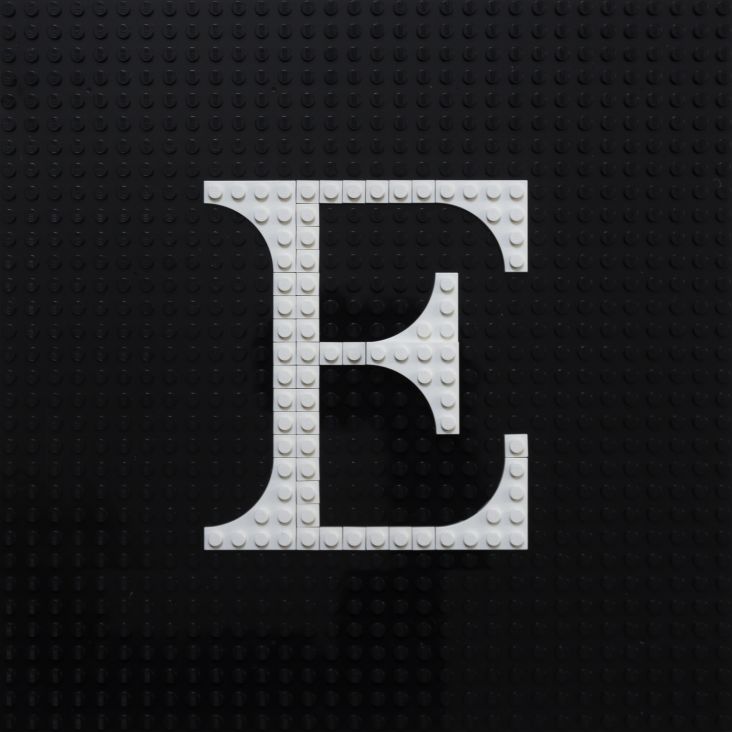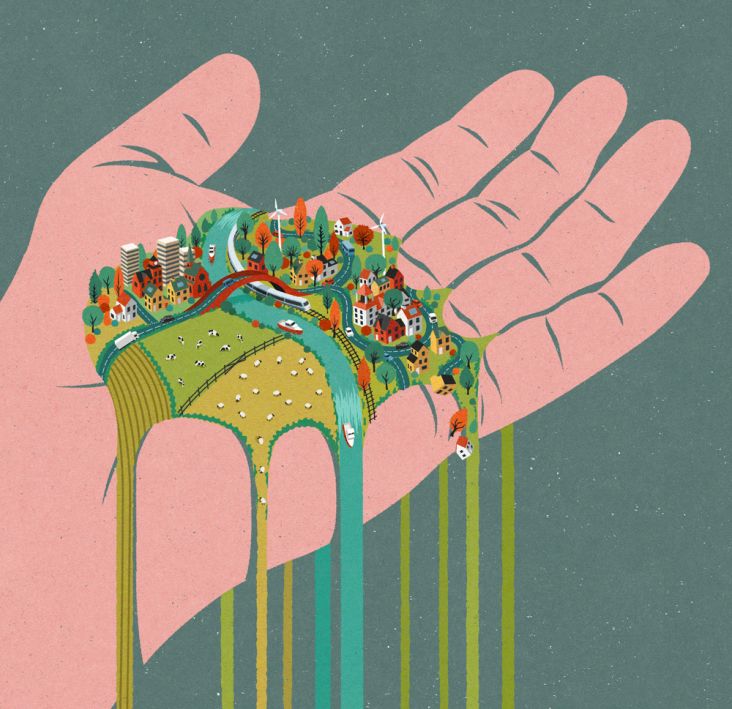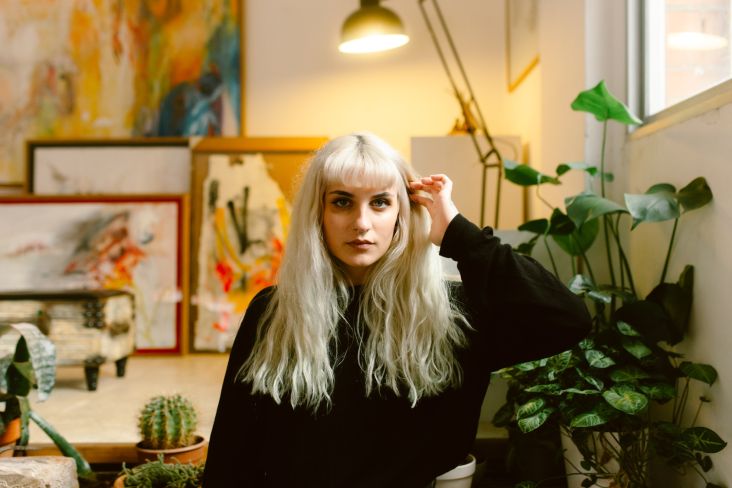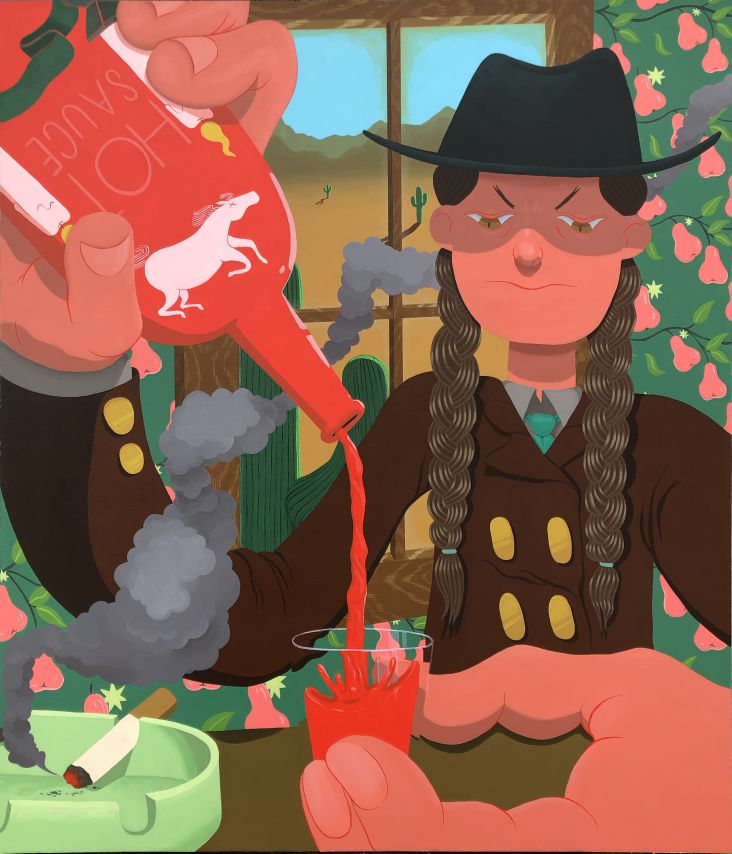Jules Magistry wants to 'nourish' masculinity through his colourful drawings
Inspired by comics, video games, boys and men, the Paris-based illustrator hopes to draw up new representations of masculinity through his work.
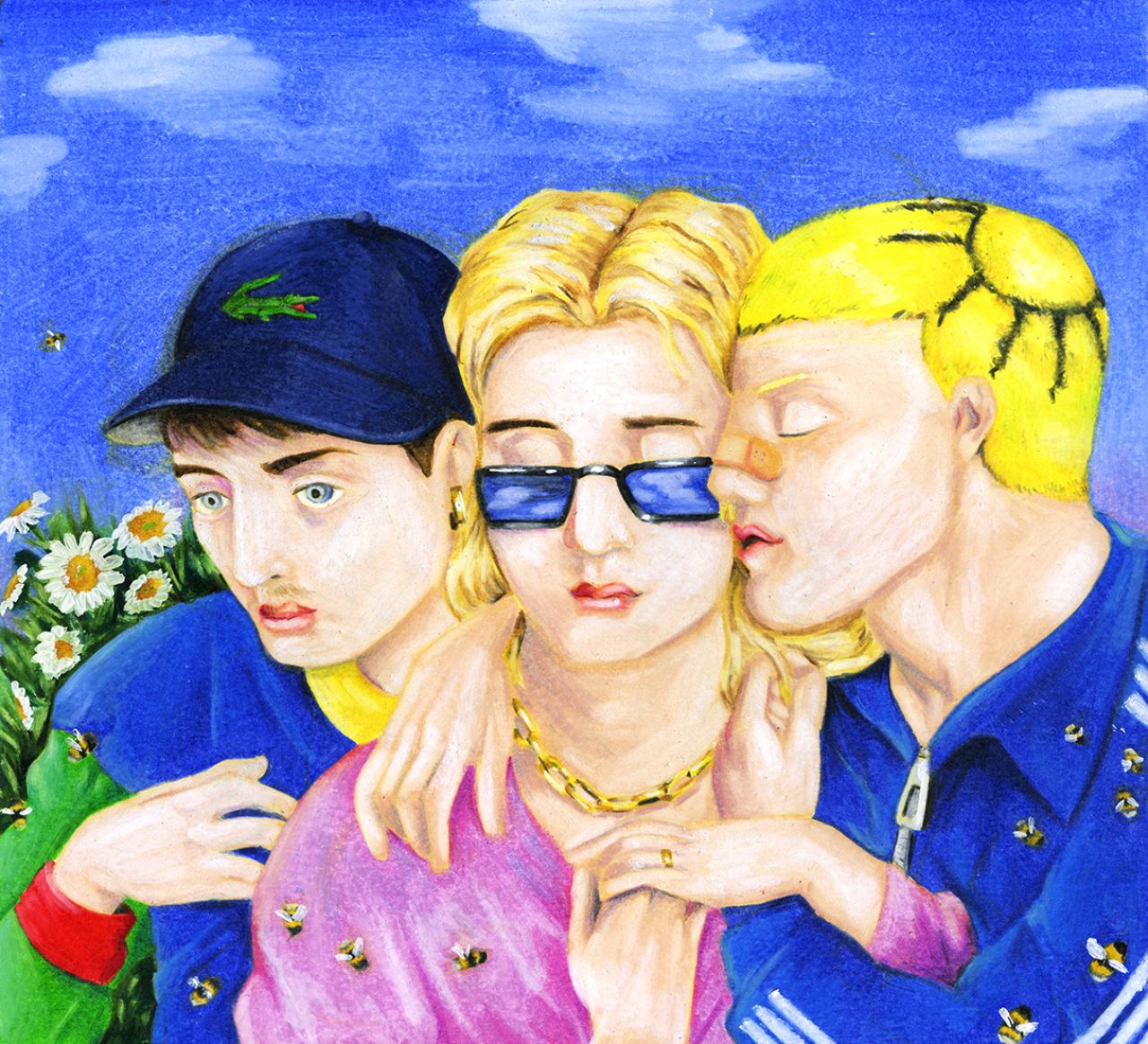
© Jules Magistry
When Jules Magistry speaks of his influences, it's perhaps unsurprising to hear that he gets inspired by comic books, video games, skateboarding and films by Gregg Araki. Most imperative, however, is his references to boys, men and "visions of masculinity".
An especially prevalent topic today – considering the rise of social media and the influx of immediate communication – Jules hopes to draw up his own version of masculinity through his illustrations. As such, Jules builds on pop culture, identity and adolescence, reflecting on his own experiences and ultimately creating a "nourished" version of masculinity. Below, we caught up with Jules to get the low down on his most recent sketchy and beautiful illustration work.
Where are you from, and how did you get into illustration?
I grew up in the suburbs near Paris, not too far but not so close. It was like American suburbia with all the same houses and same gardens, parents and cars. The area I grew up in changed so much because Disneyland had just arrived, so everybody worked for Disney, and all the fields became suburb houses and big malls. It affected me a lot and got me so close to American culture in my imagination.
I also grew up as a gay kid in a very closed-minded small town, but it started to change when I moved to high school. However, it wasn't enough; I moved to Paris to study graphic design as a way of reassuring my parents because it seemed like a better way to make money. I graduated three years later in 2013 and presented an illustration book with barely any graphic design work inside (haha). I started to do internships in publishing houses because I wanted to be near illustrations and books. It didn't last long as I didn't want to work on layouts on Indesign – all that kind of stuff – I just wanted to draw.
So, I had a lot of small jobs and started working hard on my drawings. One day, it clicked in my mind: the colours, the characters, the tools – everything. That was around 2016. And then I published some stuff here and there, and I created my first published book Teenage Apocalypse 4 (paying homage to Gregg Araki) in 2019, presenting it at The Paris Ass Book Fair in the Palais de Tokyo. I had the chance to meet other queer artists there and to really show my work. And then, in 2020, Versace called me, and I created drawings for them. It was a dream come true, and I've been working on new stuff since then.
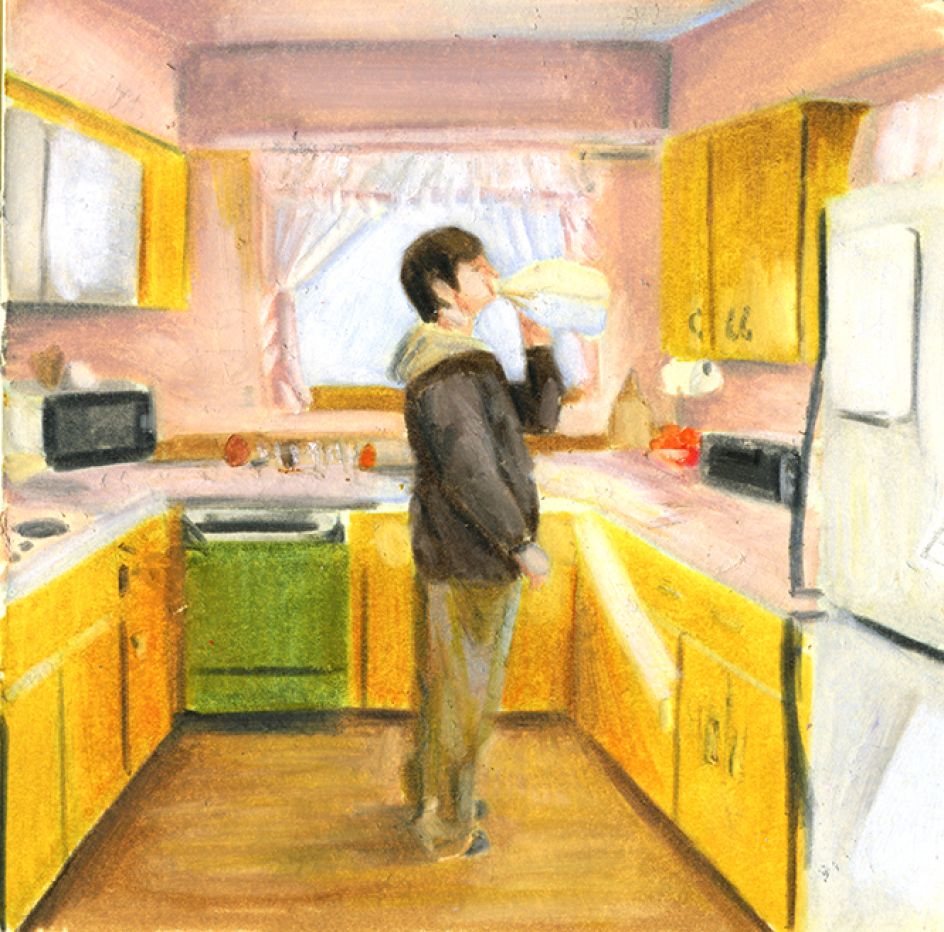
© Jules Magistry
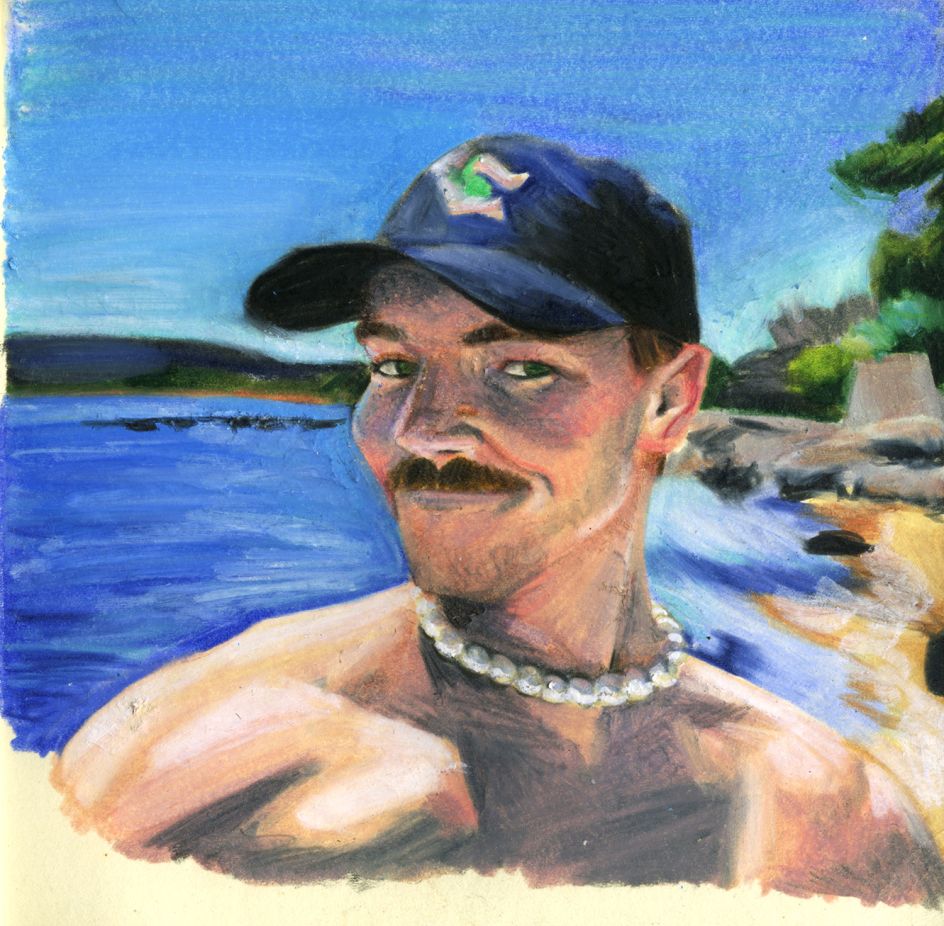
© Jules Magistry
What are your influences?
I have to say, mostly boys and men. Instagram is an awful and beautiful place at the same time for that kind of inspiration, but there are still obscure Tumblr references that I love with cool mood boards of dudes and somehow brutalist architecture with it. So, yeah, guys.
Visions of masculinity are evolving so much these days, and questions around it too. It's exhilarating! For example, I've already drawn Yann Horowitz three times, a queer pro skater I love. The subjects, for me anyway, are often guys, adolescence, suburbia, violence and queerness. But I get a lot of my inspiration from movies and tv shows, the photography, the actors, the costumes and the colours! I mean, I can't get tired of Gregg Araki, Edward Scissorhands or Heathers. And at the same time, great new shows pop up like We Are Who We Are by Luca Guadagnino.
I try to mix everything with my huge geek culture. This includes comic books and video games, which is a world that's hard to keep up with, but there's so much interesting work. The x-men comic books are still really political, the French comics industry is still flowing with incredible new artists, and indie video games are still inventing a new way of telling stories. For so long, I couldn't find stories that mixed good queer characters and geek/video games culture, so I tried to start drawing it. Finally, the fashion industry and magazines like Interview and ID are still great references to work from.
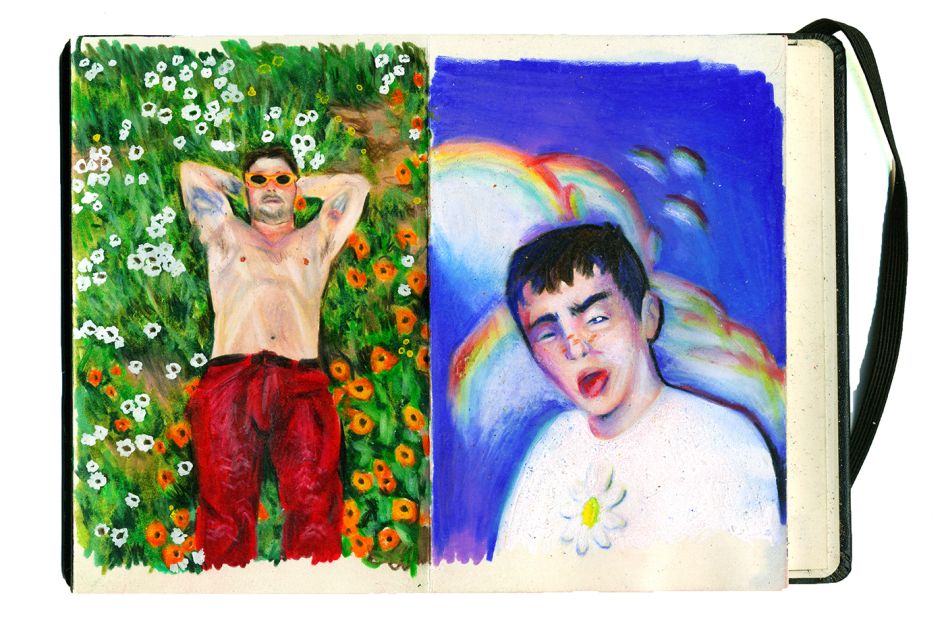
Sketchbook © Jules Magistry
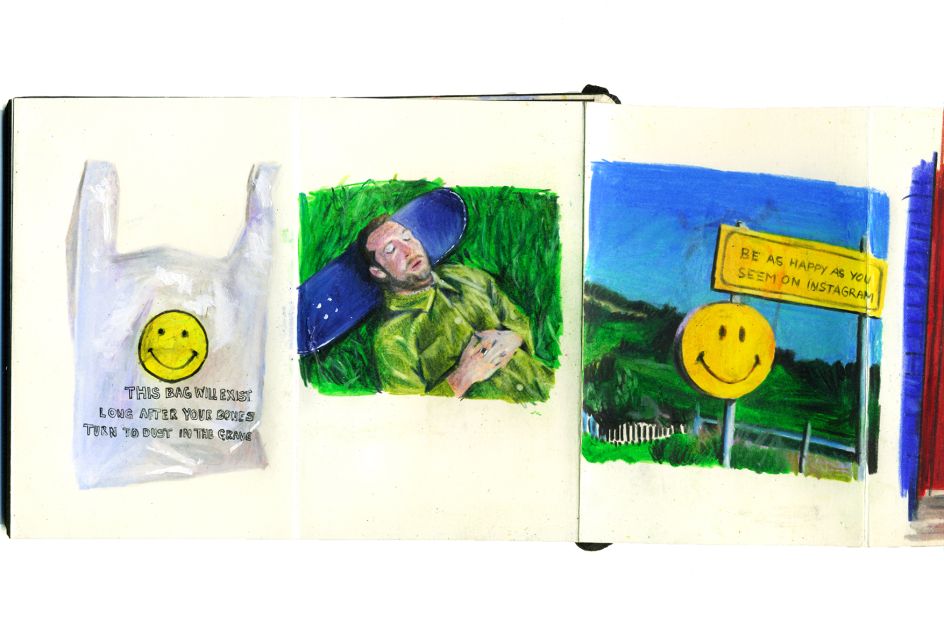
Sketchbook © Jules Magistry
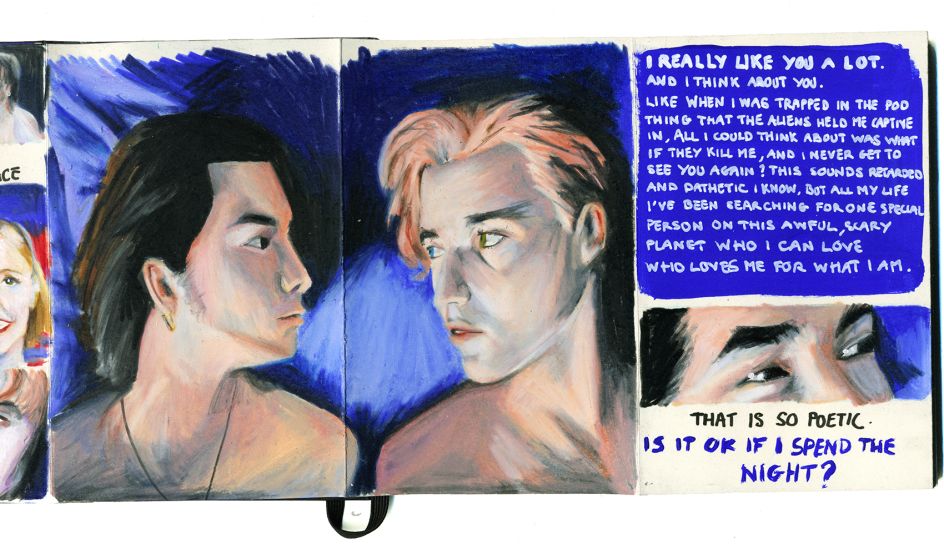
Sketchbook © Jules Magistry
Can you talk us through your process?
I try to identify the global colour palette I'm going to use, almost as if I'd use paint, but it's all colour pencils! So I figure out the main colours and all the nuances I could add. I try not to create too many sketches before the definitive drawing, to avoid it being static – I also like to keep the mistakes. I love them. And I work, again, as if I use paint by putting colours here and there, one on top of the other, changing one by adding new tones.
I can't erase anything with my colour pencil technique, so modifying something comes from adding or putting a new colour on top of another and pressing hard on the pencil. I like the 'no correction possible' process. It's the most enjoyable part of drawing – my idea of colours frames everything in my work. I mostly work on Leporello books, so in the end, all the drawings create continuity, a story altogether.
Can you pick out a couple of recent works and talk us through them?
The first one is part of a series of drawings I'm starting about queer love scenes in cinema. I just finished the campfire scene in My Own Private Idaho, a movie I can watch over and over and over. The scene breaks my heart every time, and River and Keanu, I mean, I think I already drew Keanu Reeves almost ten times besides this scene. So I'm quite proud of finishing the scene and finding the right colours for the mood; it's melancholic but warm. It's also close to my heart, so seeing my little version of it is like having a figurine or a collector by-product of the movie for my own.
The second one is from the pages of the logbook I started during my residency at The Villa Noailles with artists Jean Claracq and Paul Rousteau. I didn't want to forget anything from those amazing times. It was a dreamy summer with them! So I wrote things down and drew a lot of moments I loved. For example, there's a picture of the sunrise we watched together; we woke up at 4.30 in the morning just to watch it. We went to the beach with our motorcycle, the colours were awesome, and everything was perfect! The last one is the cover of Gayletter I recreated, the one with Frank Ocean on it. It's special for me because I love Frank Ocean and because it was the first time I tried working with the really big format and oil pastels. I love the messy rendering that I got. Starting a new technique is always scary and thrilling, so it's one of my favourites (and I love that blue).
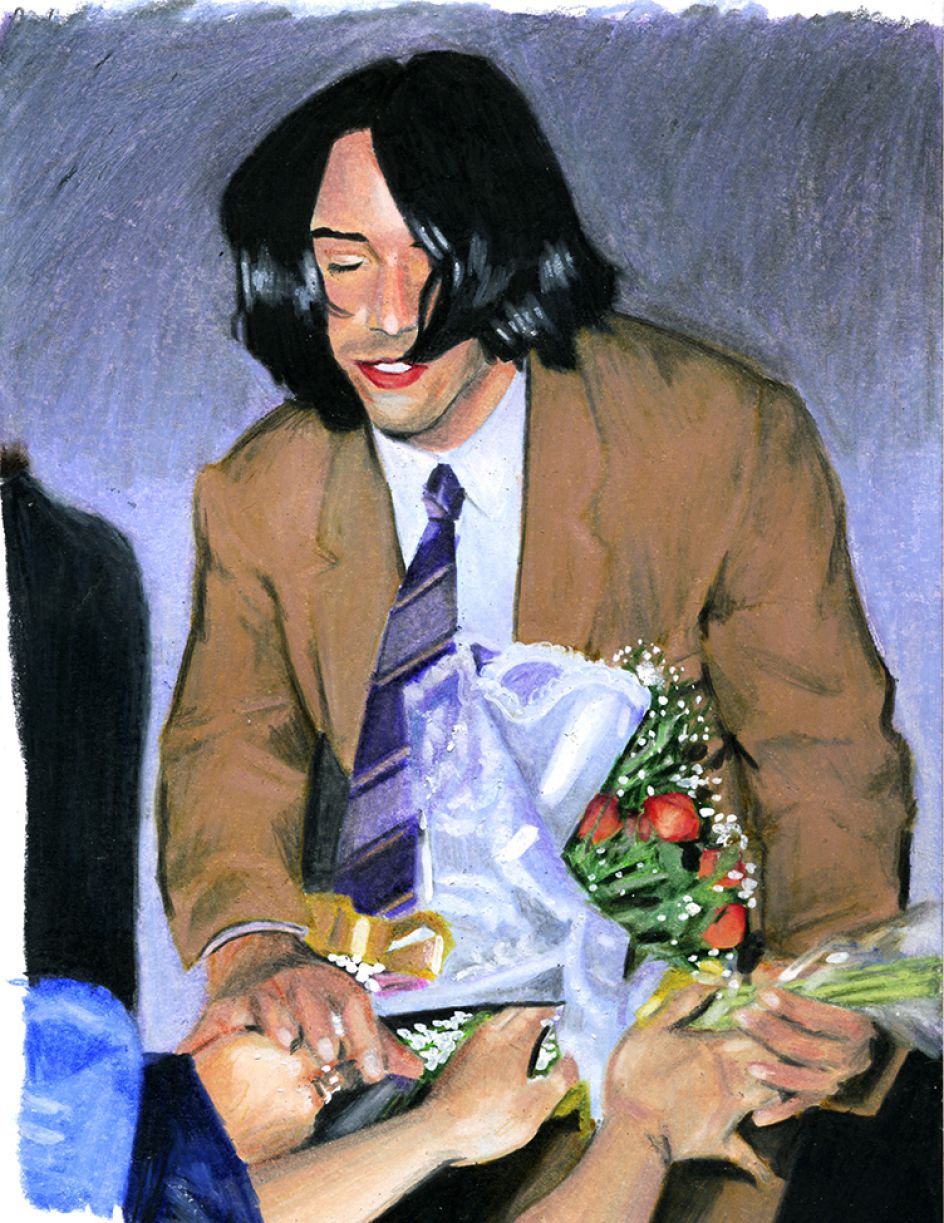
© Jules Magistry
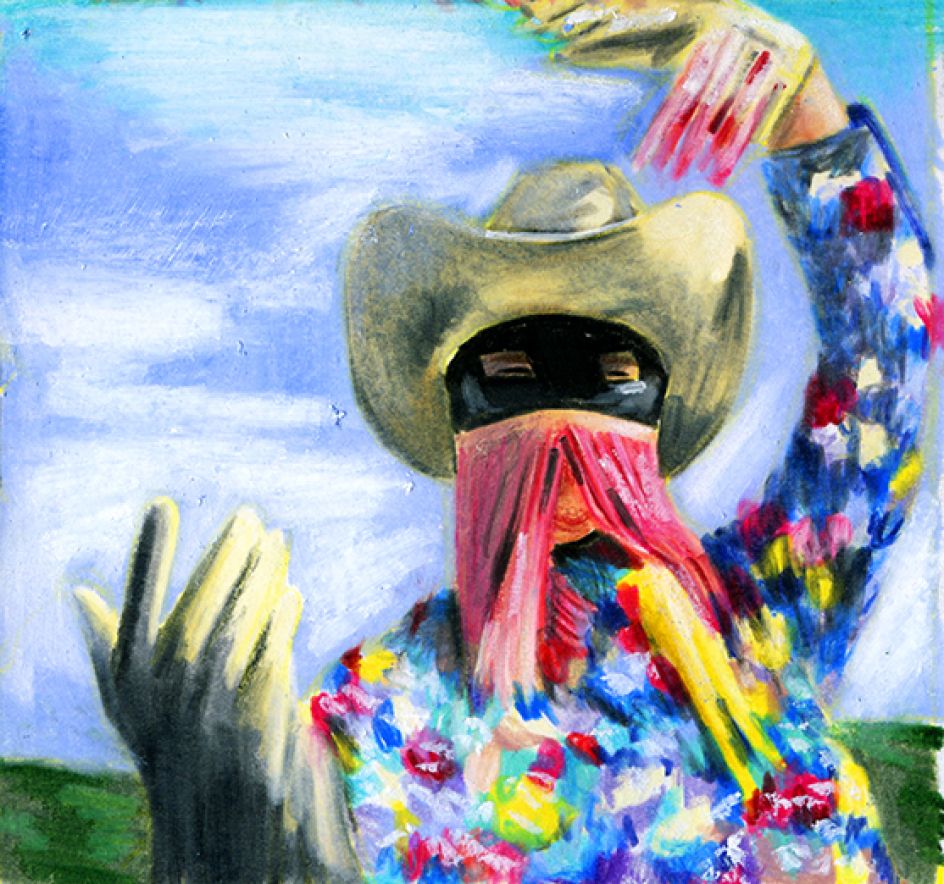
© Jules Magistry
What messages are you trying to evoke through your work?
I don't think of any audience when I'm drawing; I do it for myself. Like I said previously, it's like it's missing something, like a toy I can see but doesn't exist yet – the things I love from mainstream culture. But I've got to make it my own, and if I can make it gayer, that's even better!
Sometimes I think of my adolescent self, mostly, and sometimes it's my angry-against-the-world self that needs to draw a nuclear explosion or two to release that anger. But at the same time, I want to share messages and stories. My point is to talk about violence against young people, what it creates in identity, how we nourish toxic masculinity culture, how we need to find new representations of men. I'd love to do it with drawings and books! I think, for now, I want to start reaching the people I want.
I started a series of workshops with students at a university over the last few months – these were workshops about pop culture, identity, violence and teenagehood, all that stuff. I feel useful, and it's like I created my own Glee Club. I'll be able to exhibit more in the next year, and so those kinds of discussions and actions will amplify. But I think my best way to do it in the future will be through graphic novels.
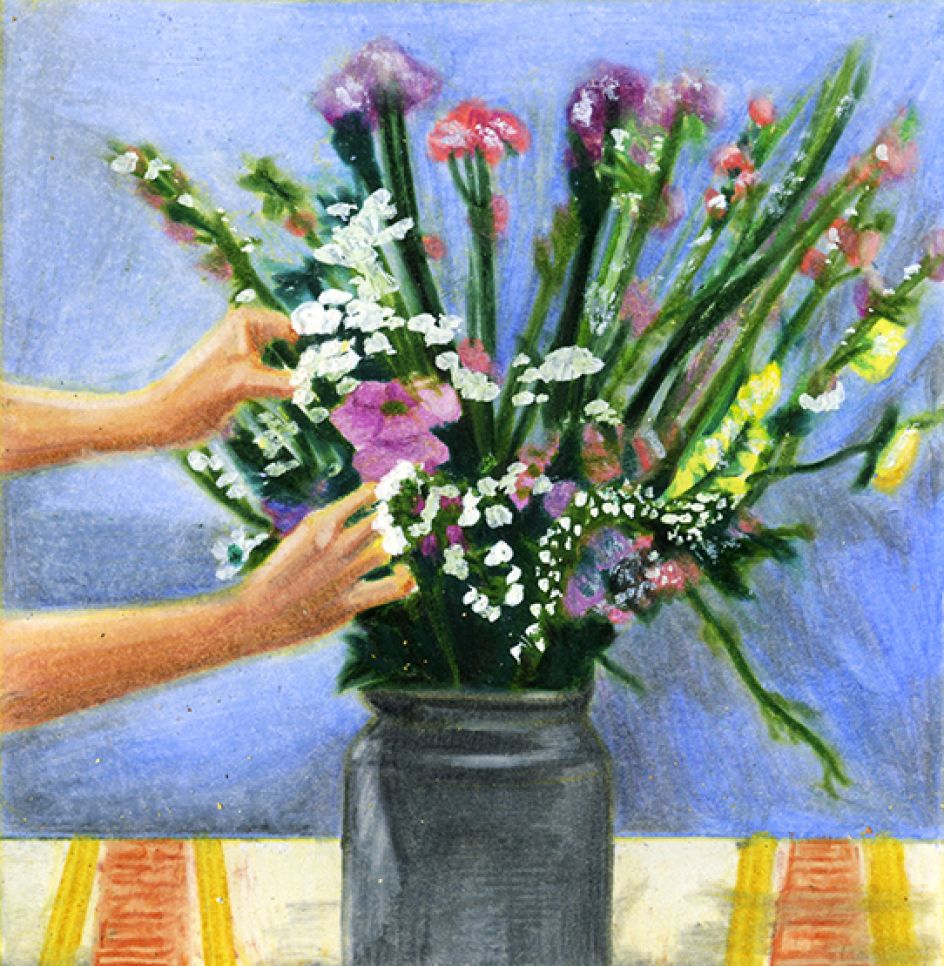
© Jules Magistry
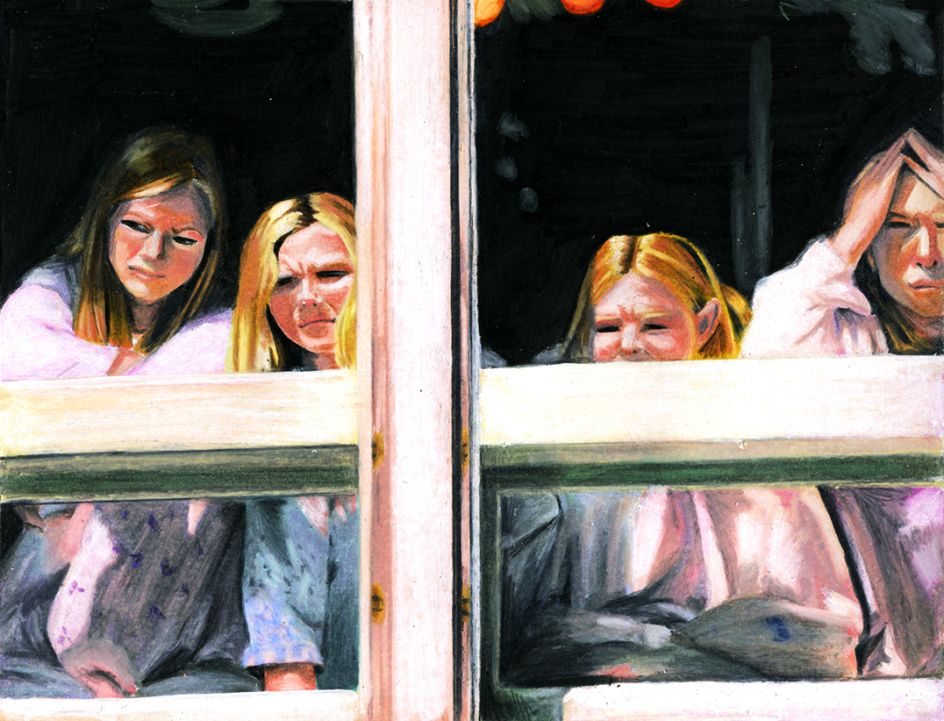
© Jules Magistry
What's in the pipeline?
I have three shows coming up. One in December at Atelier Quintal in Paris with other artists (Lisa Mouchet, Elsa Dray-Farges, Laura Ottone and Elie Martens), and we're all working around the theme of flowers – simple but effective. We will also create a special edition (a little book) with other drawings.
I also have another show in Paris in February and, for this one, I'll continue to create queer and gay love scenes in movie history. It will be a lot of work, but I want to create a huge Leporello, a huge Frieze and find a way to use comic book codes in a new way.
The last one will be in Lausanne, Switzerland, and it's a collective exhibition at Le Musee Olympique about skateboarding. I'm excited about this one, too, because I'll be able to select and draw some of my favourite queer skateboarders, people that are beautiful, talented and inspiring. I hope it will give them a good place to be represented and to inspire others! I'm also still working on my graphic novel but need to find a publishing house.

















